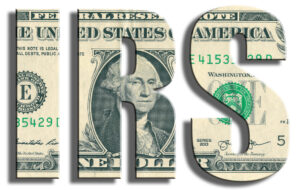Think twice about automatically paying the amount due on a notice
 Here are some quotes from IRS correspondence that serve as evidence that our national tax collection agency is not always right when they send a “payment due” letter:
Here are some quotes from IRS correspondence that serve as evidence that our national tax collection agency is not always right when they send a “payment due” letter:
- “Thank you for your correspondence. We currently do not have a copy of the correspondence we sent to you regarding your child’s tax return.”
- “Our records show we received a 1040X…for the tax year listed above. We’re sorry but we cannot find it.”
- “Our records show you owe a balance due of $0.00. If we do not receive it within 30 days, appropriate collection steps will be taken.”
- “Payment is due on your account. Please submit payments on or before June 31 to avoid late payment penalties and interest.”
Think twice!
It’s pretty tough to pay a balance due of $0 on June 31st when June only has 30 days. The message should be clear. So, if you receive a notice from the IRS, do not automatically assume it is correct and submit payment to make it disappear. Here are some suggestions for how to handle a letter you may receive from the IRS or another taxing authority:
- Stay calm. This is easier said than done, but remember, the IRS sends out millions of notices each year. The vast majority of them correct simple oversights or common filing errors.
- Open the envelope. It is surprising how often overwhelm takes over clients when receiving a letter from the IRS that they cannot bear to open the envelope. If you fall into this category, remember that opening the correspondence is the first step in making the problem disappear.
- Carefully review. Review the letter. Try to understand exactly what changes the IRS recommends and determine whether you agree with their findings. Unfortunately, the IRS rarely sends correspondence to correct an oversight in your favor, but it sometimes happens.
- Respond timely. The correspondence received should be clear about the action the IRS believes you should take and within the time frame. Delays in responses could generate penalties and additional interest payments.
- Get help. Getting assistance from someone who deals with this all the time makes the process go much smoother.
- Correct the IRS error. Once you understand the problem, a written response with copies of documentation will cure most of these IRS correspondence errors. Often, the error is due to the inability of the IRS computers to conduct a simple reporting match. Pointing the information out on your tax return might be all it takes to solve the problem.
- Certified mail is your friend. Any responses to the IRS should be sent via certified mail or other means with proof of delivery in order to provide evidence of your timely correspondence. Lost mail can lead to delays, penalties, and additional interest on your tax bill.
- Don’t assume it will go away. Until you receive a definitive confirmation of the problem’s resolution, it’s safe to assume the IRS still thinks you owe the money. A written follow-up will be required if no correspondence confirming the correction is received.
Got an IRS letter?
Receiving a letter from the IRS is never fun. Contact our RRBB advisors if you have questions or need assistance.
RRBB eNEWSLETTER
Get free tax planning and financial advice




